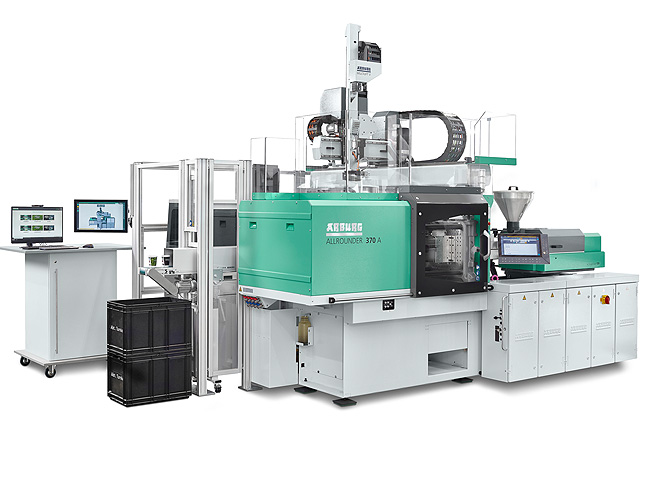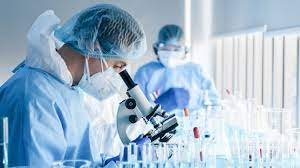a takeout container from lunch, a wadded-up candy wrapper, even the mouse you’re using right now to browse the Web. Love it or hate it, plastic is everywhere.

Reduce and reuse are the best players in the product lifecycle game. But recycling can’t be benched when it comes to plastics, and here’s why…
Fossil fuel and energy savings
The materials that go into creating plastics (those not made from other recycled materials) involve using petroleum and natural gas resources. Therefore, recycling plastic essentially cuts down on the usage of these resources because it can be reprocessed and used to create other products
“The most important thing [about recycling plastic] is the conservation of raw materials,” said Dennis Sabourin, executive of the National Association for PET Container Resources (NAPCOR). “You have an embedded energy source of a product that is made from petrochemical and natural gas feedstock, and if you recycle them to be made into new products, then you don’t have to use more feedstock.”
While there are seven numeric codes that denote different categories of plastics, Sabourin commented specifically on the make-up of PET plastic, which carries one of the highest recycling rates in the U.S. at 28 percent in 2009. Denoted as plastic #1, this resin is commonly found in bottles for water, soft drinks, juice, sports drinks, mouthwash, ketchup, beer and salad dressings.
PET is made from two chemicals: an acid (Terephthalic acid); and an alcohol (Ethylene glycol). When reacted together, these chemicals produce Polyethylene terephthalate (PET). In North America, the acid is derived from oil, and the alcohol is derived from natural gas. The proportion of the two chemicals is two-thirds oil based (from the acid) and one-third natural gas based (from the alcohol).
“You have a product that is an energy source, and we have shown through lifecycle analysis that when you make a product through recycled content you create less greenhouse gases than converting the materials from virgin resources,” Sabourin said.
To translate this energy savings into more tangible terms, recycling just one 20-ounce plastic bottle can save enough energy to power a compact fluorescent light bulb (CFL) for almost 10 hours, or a laptop for 2.5 hours. Additionally, recycling a one-gallon milk jug saves enough energy to power a window fan for more than three hours, or a clothes washer for more than hour, according to the U.S. EPA.
Consumption is high, recycling is low
According to the EPA, in 2008, the U.S. generated about 13 million tons of plastics in the municipal solid waste (MSW) stream as containers and packaging, almost 7 million tons as non-durable goods, and almost 11 million tons as durable goods. However, the overall recovery plastics is relatively small – 2.1 million tons, or 6.8 percent of plastics generation in 2008.
But there have been major movements to boost these lackluster rates. On the upside, major companies around the U.S. are working to incorporate more robust recycling programs into their stores. For example, retailers such as Walmart, Target and Lowe’s and major grocery stores now accept plastic bags and wraps for recycling. Aveda and Whole Foods are also on board with plastic bottle cap recycling and plastic #5 programs as well. However, on the downside, curbside recycling programs across the U.S. have decreased from 8,875 programs in 2002, to approximately 8,660 in 2008, according to an EPA report.
“There is technically recyclable, and there is economically and logistically recyclable, and sometimes it’s not the same thing,” said Darby Hoover, senior resource specialist for the Natural Resources Defense Council (NRDC). “This happens many times with plastics. Even if plastics are marked with resin codes, it can be confusing, and a lot of recycling centers are still relying, on large degree on hand sorting.”
In an Earth911.com exclusive interview with five people who choose not to recycle, the top reasons for forgoing the process were lack of convenience and general confusion about recycling, specifically regarding plastics. Because different types of plastics are handled differently, the rules can be confusing for consumers
Matt, a twenty-something college graduate, said he doesn’t understand the “rules” of recycling, which, in turn, deters him from participating. “Recyclers have their own language. It’s like a foreign country, and I don’t want to be a tourist there,” he told Earth911.com earlier this year.
Although U.S. recycling rates are lower in comparison to other countries, they continue to steadily increase year after year. “It’s important to continue the streak. The latest recycling report shows we’ve recycled more bottles every single year since we started tracking in 1990 – two whole decades,” said Jennifer Killinger, director of sustainability and public outreach for the ACC.
More recycling means more jobs
“Recycling anything helps reduce environmental impact across the board,” said Hoover. “Using recovered materials in the product saves energy, water, natural resources, landfill space and often creates jobs, so it’s usually an environmental winner across the board.”
Recycling is estimated to create nearly five times as many jobs as landfilling. And, according to Richard Yost, press officer for the EPA. “Recycling is actively contributing to America’s economic vitality.”
According to a study cited by the EPA, 103,000 jobs, or 2.7 percent of all manufacturing jobs in the Northeast region of the U.S., are attributed to recycling. The jobs created by recycling businesses draw from the full spectrum of the labor market (ranging from low- and semi-skilled jobs to highly skilled jobs). Materials sorters, dispatchers, truck drivers, brokers, sales representatives, process engineers, and chemists are just some of the jobs needed in the recycling industry.
Besides creating jobs on the operational end, recycling plastics also creates jobs as the material recovered is used to create new products ranging from construction materials to fashion.
“Recycling and recycled products are growing industries and by recycling, we can all do our part to support the creation of ‘green’ jobs that rely on valuable used plastics to make new products like composite decking, clothes, toys, pet supplies and any number of other things,” said Killinger.
Reuse revolution, zero-waste evolution
Forty years ago, the U.S. only had one curbside recycling program. Today, not only are companies, municipalities and manufacturers participating in recycling, but more of these industries are thinking about moving beyond recycling, taking a new, whole lifecycle approach.
In recent years, we’ve seen a marked increase in city-wide zero-waste goals, waste-to-energy programs, products with a higher percentage of recycled content and rapidly evolving experimentation of incorporating new resources into plastics, like agriculture waste and plant-derived products.
“Especially where you have packaging you can’t get rid of right away, it’s significant to explore opportunities for renewable ways to make [single-use packaging],” said Hoover. “We have a chance to do things in a thoughtful and creative way that can have little impact.”
Hoover is referring to bio-based plastics, or biopolymers, which are plastics made with materials that can be grown and are renewable. “‘Bio-based plastics’ means it’s made from a raw material that’s a renewable material,” said Keith Christman, managing director of plastics markets for the ACC. Some bio-based plastics can be recycled in our current system, while others cannot, an important distinction that consumers have to understand in order to make these products viable.
On an industry level, plastics manufacturers are working on light-weighting plastics to cut down on usage of virgin resources and emissions associated with shipping and transportation of plastics. In fact, today’s 2-liter plastic beverage bottle and 1-gallon milk jug weigh approximately 33 percent less than they did in the 1970s.
Taking a more holistic approach to plastics is another way to reduce the overall impact on packaging waste. Along with reducing, reusing and recycling plastics, the purchase of products that incorporate recycled materials makes a plastic bottle’s journey through the stream worth it in the end.
“To make apple pies, a pie company needs a steady supply of apples from a reliable source,” said Killinger. “The same is true with plastics! As more innovative products come on the market made with recycled plastics, like fleece jackets and tees, the makers need a steady supply of source material. The more you recycle, the more you help assure a steady supply, the more attractive it becomes to make things out of recycled plastic. All of us help make the whole process self-sustaining.”
Hoover of the NRDC agrees. As consumers begin to take in the 3R concept as a whole, the way that Americans interact with plastic products will shift to a more circular way of purchasing, consuming and tossing.
“That level of awareness about what we’re buying and how it’s packaged is increasing,” she said. “I think people are realized they can have choices around their garbage to throwing something away because there really isn’t an ‘away’ to throw things.”
Source : earth911.com






